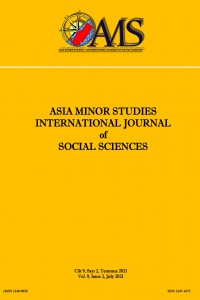The Pursuit of the Ideal and the Reality of the Art-Object: Intertextuality, Antilogike, and Self-awareness in the Works of D. G. Rossetti
The Pursuit of the Ideal and the Reality of the Art-Object: Intertextuality, Antilogike, and Self-awareness in the Works of D. G. Rossetti
Author(s): Anna AsiatidouSubject(s): Aesthetics, Ancient Philosphy, Contemporary Philosophy, 19th Century, Theory of Literature, British Literature
Published by: Kilis 7 Aralık Üniversity
Keywords: D.G. Rossetti; Reality; Intertextuality; Antilogike; Object;
Summary/Abstract: D.G. Rossetti's works reveal how the poet, as an aestheticist through his pursuit of the ideal, frees the concept of reality from pre-given limitations. He mainly creates an open field of renegotiation, even introducing an alternative understanding of real and authentic. In his famous poems "The Blessed Damozel" and "The Burden of Nineveh," Rossetti applies intertextuality and signifies the potential of dialectic poetry. His focus on aesthetic qualities and the subversion of the subject matter assures interpretative ambiguity. This kind of ambiguity rather than confusion achieves poetic self-awareness and omens future perceptions of reality, which can be composed by an object, as an artistic process, or the artistic object itself. This article recognizes the links of ancient (Platonic) philosophy on Aesthetics and Reality with contemporary opinions in Philosophical Realism. However, it mainly focuses on two distinctive works of the Victorian poet as a contemplating station of how an artistic object, freed from any responsibility except its consistency on its aesthetic qualities, can signify dialectic (higher state of cognition) processes affording reality.
Journal: Asia Minor Studies
- Issue Year: 2021
- Issue No: 2
- Page Range: 828-840
- Page Count: 13
- Language: English

